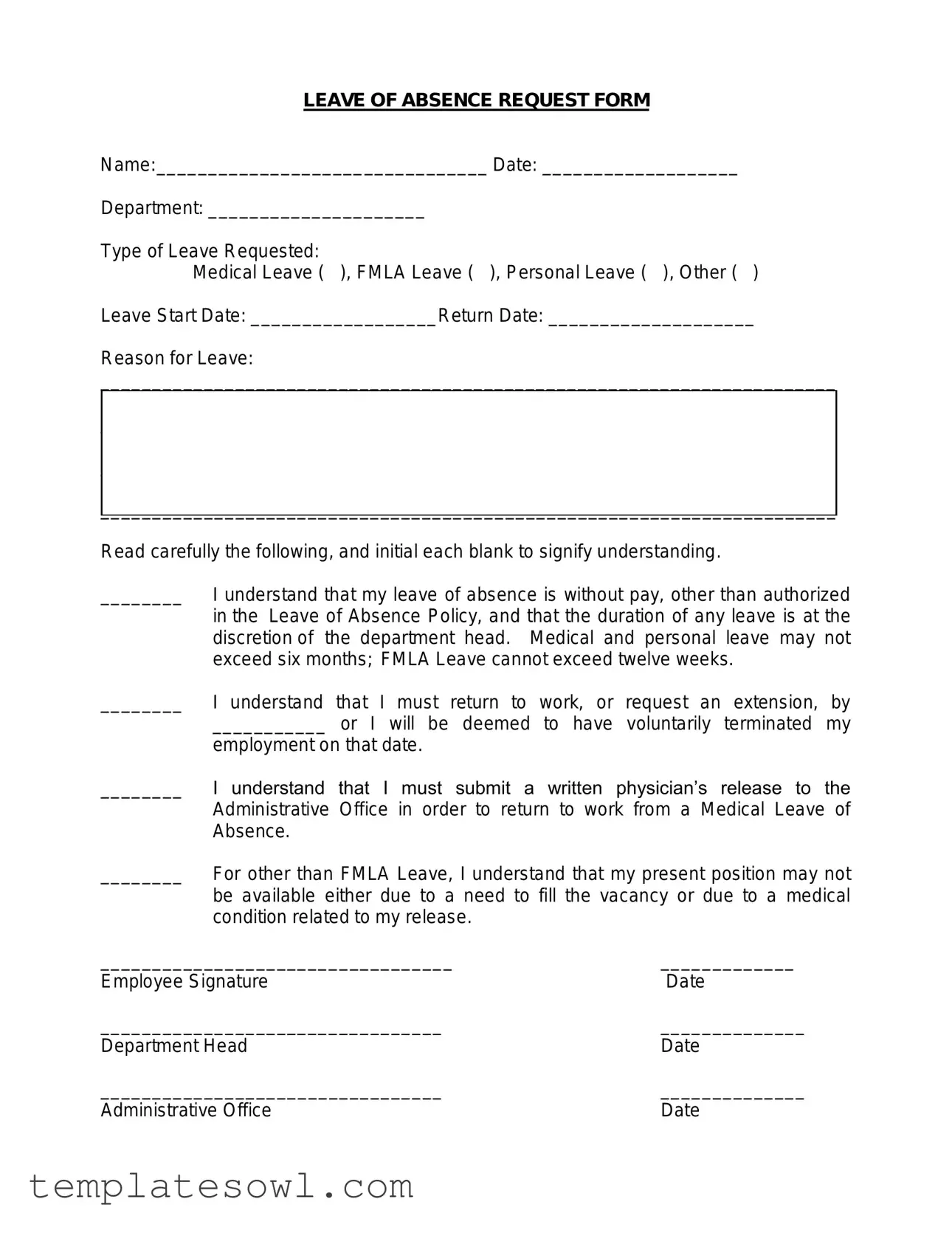What is a Leave of Absence Request Form?
The Leave of Absence Request Form is a document used by employees to formally request a temporary break from work. This form covers various types of leave, including medical, FMLA, personal, or other reasons, allowing employees to document the duration and rationale for their absence.
What types of leave can I request using this form?
You can request different types of leave using this form: Medical Leave, which is typically for health-related issues; FMLA Leave, which is protected by the Family and Medical Leave Act; Personal Leave, for reasons not covered under other classifications; and Other, for any other specific situations you may need to address.
How long can I be on leave?
The form specifies that medical and personal leaves may not exceed six months. FMLA Leave is limited to twelve weeks. It’s essential to plan accordingly as the duration of leave is generally at the discretion of your department head.
What happens if I don't return to work on the agreed date?
If you fail to return to work or do not request an extension by the date indicated, you may be deemed to have voluntarily terminated your employment. It is critical to communicate any changes needed regarding your return date.
Do I need a doctor's note to return from a Medical Leave?
Yes, upon returning from a Medical Leave of Absence, you must submit a written physician's release to the Administrative Office. This step ensures that you are medically cleared to resume your job responsibilities.
Can I request an extension for my leave?
If you need more time away from work, you can request an extension before your current leave period ends. Be sure to communicate with your department head and provide any necessary documentation to support your request.
What should I include in the reason for my leave?
In the form, there is a section dedicated to explaining the reason for your leave. It’s helpful to provide as much detail as you feel comfortable sharing, as this can help in understanding your situation and facilitating your request.
Is the leave without pay?
According to the policy outlined on the form, the leave of absence is without pay unless specified otherwise in the Leave of Absence Policy. It's crucial to be aware of your company’s policies regarding pay during your leave to avoid surprises.
What if my position isn’t available when I return?
It’s important to note that for leaves other than FMLA Leave, your current position may not be guaranteed upon your return. This can happen if your employer needs to fill your position during your absence or if your medical condition affects your ability to return.
Where should I submit my Leave of Absence Request Form?
You should submit your completed Leave of Absence Request Form to your department head or the appropriate administrative office within your organization. Ensure all necessary signatures are obtained for the request to be formally acknowledged.

